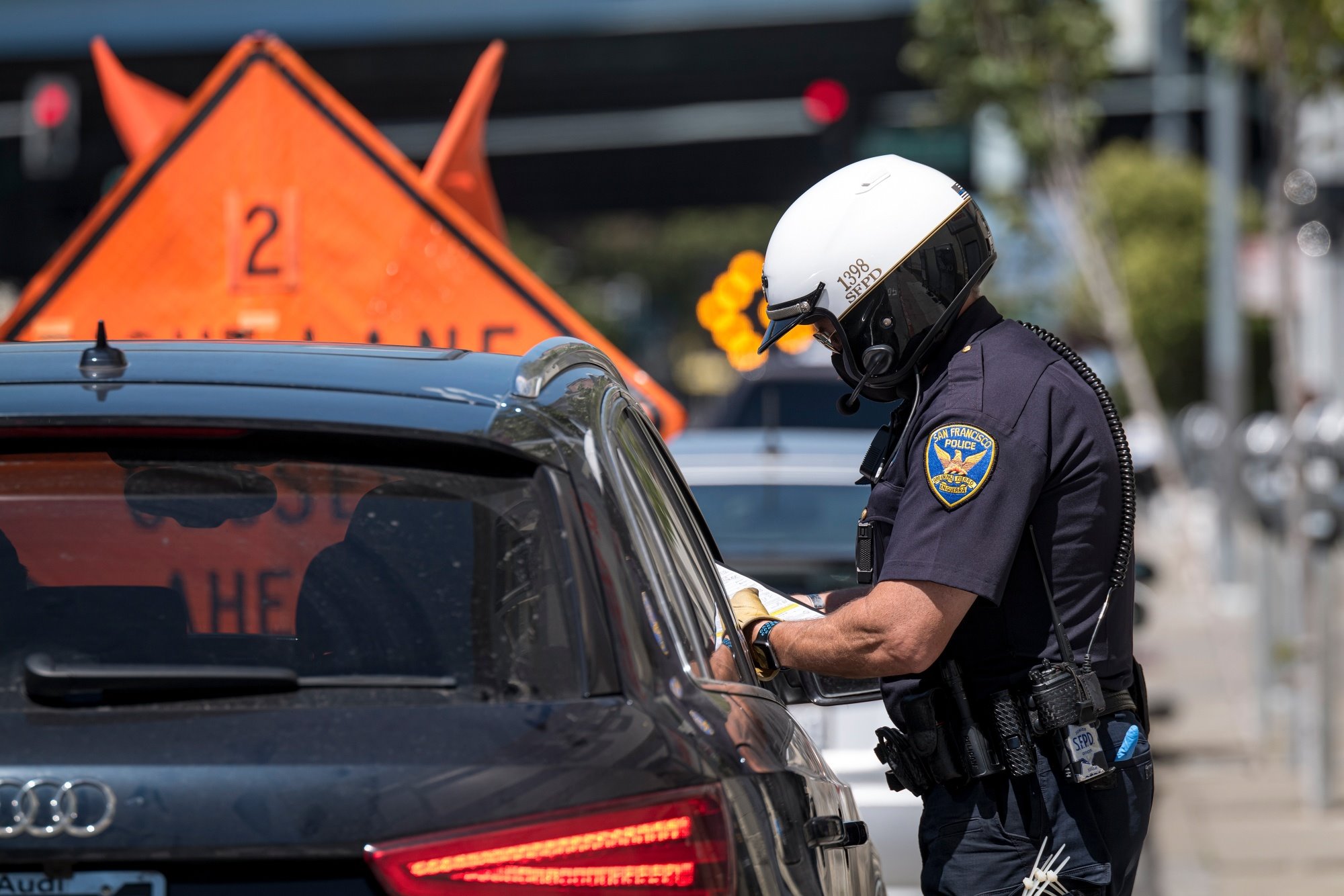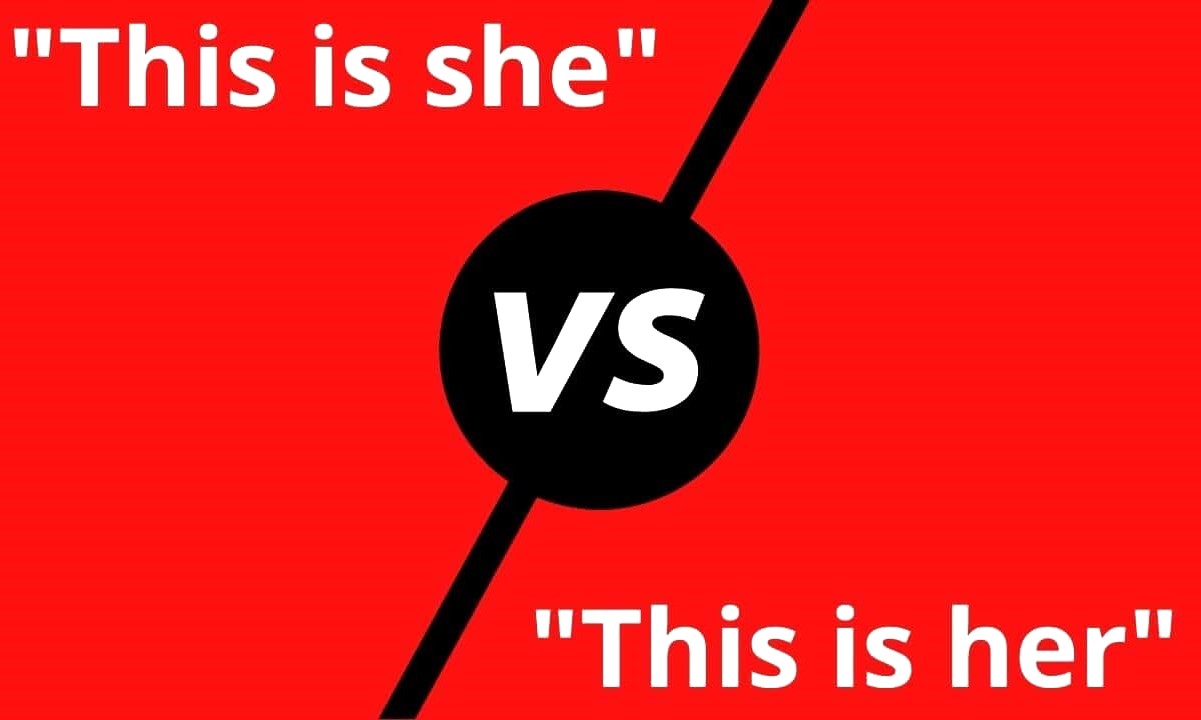Home>Law and Legal Advice>The Key Difference Between ‘Probable Cause’ And ‘Reasonable Suspicion’ For Police Stops


Law and Legal Advice
The Key Difference Between ‘Probable Cause’ And ‘Reasonable Suspicion’ For Police Stops
Modified: March 3, 2024
Learn the key difference between 'probable cause' and 'reasonable suspicion' for police stops with expert legal advice. Understand your rights and stay informed.
(Many of the links in this article redirect to a specific reviewed product. Your purchase of these products through affiliate links helps to generate commission for Noodls.com, at no extra cost. Learn more)
Table of Contents
- Introduction
- Understanding 'Probable Cause'
- Understanding 'Reasonable Suspicion'
- Key Differences Between 'Probable Cause' and 'Reasonable Suspicion'
- Examples of 'Probable Cause' and 'Reasonable Suspicion' in Police Stops
- Importance of Distinguishing Between 'Probable Cause' and 'Reasonable Suspicion' for Police Stops
- Conclusion
Introduction
Understanding the legal concepts of "probable cause" and "reasonable suspicion" is crucial in comprehending the circumstances under which law enforcement officers can conduct a police stop. These terms are fundamental to the Fourth Amendment of the United States Constitution, which protects individuals from unreasonable searches and seizures. When a police officer stops an individual, whether on foot or in a vehicle, they must have a legal basis for doing so. This basis typically involves either probable cause or reasonable suspicion.
The distinction between probable cause and reasonable suspicion lies at the heart of law enforcement's authority to detain or search individuals. While both concepts are rooted in the Fourth Amendment, they differ significantly in their legal standards and the level of evidence required to justify police action. By delving into the nuances of these two legal standards, individuals can gain valuable insights into their rights and the limitations of law enforcement in conducting stops and searches.
In this article, we will explore the key differences between probable cause and reasonable suspicion, providing a comprehensive understanding of each concept. By examining real-life scenarios and examples, we aim to shed light on the practical implications of these legal standards in police stops. Additionally, we will underscore the importance of distinguishing between probable cause and reasonable suspicion, emphasizing the impact of these distinctions on the protection of individual rights and the proper execution of law enforcement duties.
With a clear grasp of the principles underlying probable cause and reasonable suspicion, individuals can navigate encounters with law enforcement more knowledgeably and assert their rights effectively. This knowledge is essential for fostering a society where law enforcement upholds the Constitution while ensuring public safety and security. Let's delve into the intricacies of probable cause and reasonable suspicion to grasp their significance in the context of police stops.
Understanding 'Probable Cause'
Probable cause is a fundamental legal concept that serves as a cornerstone of law enforcement practices, particularly in the context of police stops and searches. It refers to the standard of evidence required for a law enforcement officer to believe that a crime has been, is being, or is about to be committed. This belief must be based on factual evidence and circumstances that would lead a reasonable person to conclude that an individual is involved in criminal activity.
In essence, probable cause demands more than a mere suspicion or hunch. It necessitates a reasonable belief, supported by specific and articulable facts, that a person has committed, is committing, or is about to commit a crime. This standard is rooted in the Fourth Amendment's protection against unreasonable searches and seizures, aiming to safeguard individuals from arbitrary intrusions by law enforcement.
To establish probable cause, law enforcement officers must rely on objective evidence, such as witness statements, physical evidence, or their own observations, that leads them to reasonably believe that a crime has occurred or is in progress. This evidence must be adequate to justify the intrusion into an individual's privacy or freedom, such as conducting a search, making an arrest, or initiating a police stop.
Moreover, probable cause is not a rigid or inflexible standard; rather, it is based on the totality of circumstances surrounding a situation. This means that officers must consider all relevant factors and evidence at their disposal to form a reasonable belief in the existence of probable cause. Additionally, the standard of probable cause applies to various law enforcement actions, including obtaining search warrants, making arrests, and conducting vehicle stops.
In summary, probable cause represents a significant threshold in law enforcement, requiring a reasonable belief, supported by factual evidence, that an individual is involved in criminal activity. By upholding this standard, law enforcement officers can ensure that their actions are grounded in objective evidence and are not arbitrary or unjustified. Understanding the nuances of probable cause is essential for individuals to comprehend the legal basis for police stops and searches, empowering them to assert their rights effectively in encounters with law enforcement.
Understanding 'Reasonable Suspicion'
Reasonable suspicion is a vital legal standard that plays a pivotal role in law enforcement encounters, particularly in the context of police stops and brief detentions. It represents a lower threshold of evidence compared to probable cause but is nonetheless crucial in guiding law enforcement actions within the boundaries of the Fourth Amendment. This legal standard allows officers to briefly detain an individual if they have specific and articulable facts that lead them to suspect that the person is, has been, or is about to be engaged in criminal activity.
Unlike probable cause, which requires a higher level of certainty regarding criminal involvement, reasonable suspicion is based on a lower level of certainty, often described as a "hunch" or a "gut feeling" supported by objective observations. However, it is essential to note that this standard cannot be based on an officer's purely subjective intuition or unsupported speculation. Instead, it necessitates a rational inference drawn from the circumstances at hand, indicating that a person may be involved in illegal conduct.
In establishing reasonable suspicion, law enforcement officers must rely on specific and articulable facts that, when taken together with rational inferences, lead to a reasonable suspicion of criminal activity. These facts may include observed behavior, information from informants, or other relevant indicators that raise a justifiable concern regarding a person's involvement in unlawful actions.
Moreover, the standard of reasonable suspicion is designed to strike a balance between the need for effective law enforcement and the protection of individual rights. It enables officers to briefly detain individuals for investigative purposes, allowing them to confirm or dispel their suspicions through further inquiry. However, it is important to emphasize that a mere hunch or an officer's subjective feeling, devoid of objective justification, does not meet the threshold of reasonable suspicion.
Furthermore, the standard of reasonable suspicion applies to temporary detentions and investigative stops, enabling law enforcement to briefly hold individuals for questioning or further investigation based on the observed circumstances. This standard serves as a practical tool for officers to address potential threats to public safety and to prevent the escalation of criminal activities while respecting individuals' constitutional rights.
In essence, understanding reasonable suspicion is essential for individuals to comprehend the legal basis for police stops and brief detentions. By grasping the nuances of this standard, individuals can gain insights into the circumstances under which law enforcement can lawfully detain them for investigative purposes, empowering them to assert their rights effectively in encounters with the police.
Key Differences Between 'Probable Cause' and 'Reasonable Suspicion'
The key differences between 'probable cause' and 'reasonable suspicion' lie in the level of evidence required and the certainty of criminal involvement. Probable cause represents a higher standard, demanding a reasonable belief, supported by specific and articulable facts, that an individual is involved in criminal activity. This standard serves as the threshold for conducting searches, making arrests, and initiating police stops. In contrast, reasonable suspicion entails a lower threshold, allowing law enforcement officers to briefly detain individuals if they have specific and articulable facts that lead them to suspect criminal activity.
Probable cause necessitates a higher level of certainty regarding criminal involvement, requiring objective evidence that would lead a reasonable person to conclude that a crime has been, is being, or is about to be committed. This standard is rooted in the Fourth Amendment's protection against unreasonable searches and seizures, aiming to safeguard individuals from arbitrary intrusions by law enforcement. On the other hand, reasonable suspicion is based on a lower level of certainty, often described as a "hunch" or a "gut feeling" supported by objective observations. It enables officers to briefly detain individuals for investigative purposes, allowing them to confirm or dispel their suspicions through further inquiry.
Furthermore, probable cause is the basis for more intrusive law enforcement actions, such as conducting searches and making arrests, as it demands a higher level of evidence to justify these actions. In contrast, reasonable suspicion applies to temporary detentions and investigative stops, allowing law enforcement to briefly hold individuals for questioning or further investigation based on observed circumstances. While probable cause requires a reasonable belief in the involvement of criminal activity, reasonable suspicion allows officers to address potential threats to public safety and prevent the escalation of criminal activities while respecting individuals' constitutional rights.
In summary, the key differences between 'probable cause' and 'reasonable suspicion' revolve around the level of evidence required, the certainty of criminal involvement, and the scope of law enforcement actions to which these standards apply. Understanding these distinctions is essential for individuals to comprehend the legal basis for police stops and searches, empowering them to assert their rights effectively in encounters with law enforcement.
Examples of 'Probable Cause' and 'Reasonable Suspicion' in Police Stops
Read more: The Key Differences Between Liberal And Libertarian Ideologies: Is There Any Common Ground?
Examples of 'Probable Cause':
- Observation of Criminal Activity: A law enforcement officer observes a driver running a red light and subsequently smells a strong odor of alcohol emanating from the vehicle, leading to the reasonable belief that the driver may be under the influence of alcohol, thereby providing probable cause for a DUI stop.
- Witness Testimony: A witness provides a detailed account of a burglary suspect's physical description and clothing, which matches the appearance of an individual seen fleeing the scene, providing the necessary probable cause for the suspect's arrest.
- Visible Contraband: During a routine traffic stop, an officer notices illegal drugs or contraband in plain view inside the vehicle, providing the requisite probable cause to conduct a search of the vehicle.
Examples of 'Reasonable Suspicion':
- Nervous Behavior and Evasive Answers: During a pedestrian stop, an individual exhibits nervous behavior, avoids making eye contact, and provides evasive answers to routine questions, raising reasonable suspicion that the individual may be involved in criminal activity, justifying further investigation.
- Matching Suspect Description: An individual matches the physical description of a suspect involved in a recent robbery, leading law enforcement to have reasonable suspicion to briefly detain and question the individual to ascertain their potential involvement.
- Unusual Activity in High-Crime Area: In an area known for drug trafficking, an individual engages in behavior consistent with drug transactions, prompting law enforcement to have reasonable suspicion to conduct a brief investigative stop to address potential criminal activity.
By examining these examples, individuals can gain insights into the practical application of probable cause and reasonable suspicion in police stops. These scenarios illustrate the pivotal role of objective evidence and specific observations in establishing probable cause, as well as the significance of rational inferences and articulable facts in justifying reasonable suspicion. Understanding these examples is essential for individuals to navigate encounters with law enforcement effectively, empowering them to assert their rights while acknowledging the legitimate grounds for police stops and investigative detentions.
Importance of Distinguishing Between 'Probable Cause' and 'Reasonable Suspicion' for Police Stops
Understanding the distinction between 'probable cause' and 'reasonable suspicion' holds immense significance in the realm of law enforcement and individual rights. The ability to discern between these legal standards is crucial for both law enforcement officers and the general public. By grasping the nuances of probable cause and reasonable suspicion, individuals can effectively assert their rights during police stops, while law enforcement can ensure the proper execution of their duties within the boundaries of the Fourth Amendment.
First and foremost, the differentiation between probable cause and reasonable suspicion serves to safeguard individual liberties and privacy rights. The Fourth Amendment's protection against unreasonable searches and seizures is deeply intertwined with the standards of probable cause and reasonable suspicion. By upholding these standards, law enforcement is held accountable for respecting the constitutional rights of individuals, ensuring that stops and searches are based on objective evidence and justifiable suspicions rather than arbitrary or unfounded actions.
Moreover, the distinction between probable cause and reasonable suspicion contributes to the effective functioning of law enforcement. It provides clear guidelines for officers to determine the level of evidence required for various law enforcement actions, including conducting searches, making arrests, and initiating investigative stops. This clarity helps prevent overreach and abuse of power, fostering a more transparent and accountable approach to law enforcement practices.
Furthermore, understanding the differences between probable cause and reasonable suspicion empowers individuals to assert their rights confidently in encounters with law enforcement. By recognizing the legal basis for police stops and searches, individuals can advocate for their privacy and freedom while acknowledging the legitimate grounds for law enforcement actions. This knowledge enables individuals to engage in informed interactions with law enforcement, promoting mutual respect and adherence to legal standards.
Additionally, the distinction between probable cause and reasonable suspicion underscores the delicate balance between public safety and individual rights. It allows law enforcement to address potential threats to public security while respecting the rights of individuals to be free from unwarranted intrusions. By upholding these legal standards, law enforcement can effectively combat crime and maintain public order without compromising the constitutional protections afforded to individuals.
In essence, the importance of distinguishing between probable cause and reasonable suspicion for police stops lies in upholding individual rights, guiding law enforcement practices, empowering individuals, and maintaining the delicate balance between public safety and personal liberties. By recognizing and respecting these distinctions, both law enforcement and the public can contribute to a society where constitutional protections are upheld, and law enforcement operates within the bounds of legality and fairness.
Conclusion
In conclusion, the concepts of "probable cause" and "reasonable suspicion" are integral to the framework of law enforcement and individual rights, particularly in the context of police stops and searches. The distinction between these legal standards is paramount for upholding the Fourth Amendment's protection against unreasonable searches and seizures while enabling law enforcement to fulfill its duties effectively. By delving into the nuances of probable cause and reasonable suspicion, individuals can navigate encounters with law enforcement more knowledgeably, assert their rights confidently, and contribute to a society where constitutional protections are upheld.
The significance of understanding probable cause lies in recognizing the threshold of evidence required for law enforcement officers to believe that an individual is involved in criminal activity. This standard ensures that searches, arrests, and police stops are grounded in objective evidence, safeguarding individuals from arbitrary intrusions. On the other hand, reasonable suspicion serves as a tool for law enforcement to briefly detain individuals for investigative purposes, addressing potential threats to public safety while respecting constitutional rights.
Moreover, the practical examples of probable cause and reasonable suspicion in police stops shed light on the pivotal role of objective evidence, specific observations, and rational inferences in guiding law enforcement actions. By examining these examples, individuals can gain insights into the legitimate grounds for law enforcement actions and the importance of upholding these legal standards in preserving individual liberties and maintaining public safety.
Ultimately, the distinction between probable cause and reasonable suspicion serves as a cornerstone for fostering transparent, accountable, and respectful interactions between law enforcement and the public. By recognizing and respecting these legal standards, both law enforcement officers and individuals can contribute to a society where constitutional protections are upheld, law enforcement operates within the bounds of legality and fairness, and public safety is effectively maintained.
In essence, the comprehension of probable cause and reasonable suspicion empowers individuals to assert their rights effectively, enables law enforcement to execute its duties within the confines of the law, and upholds the delicate balance between public safety and individual liberties. This knowledge is essential for cultivating a society where the rights of all individuals are respected, and law enforcement operates with integrity and adherence to legal standards.













